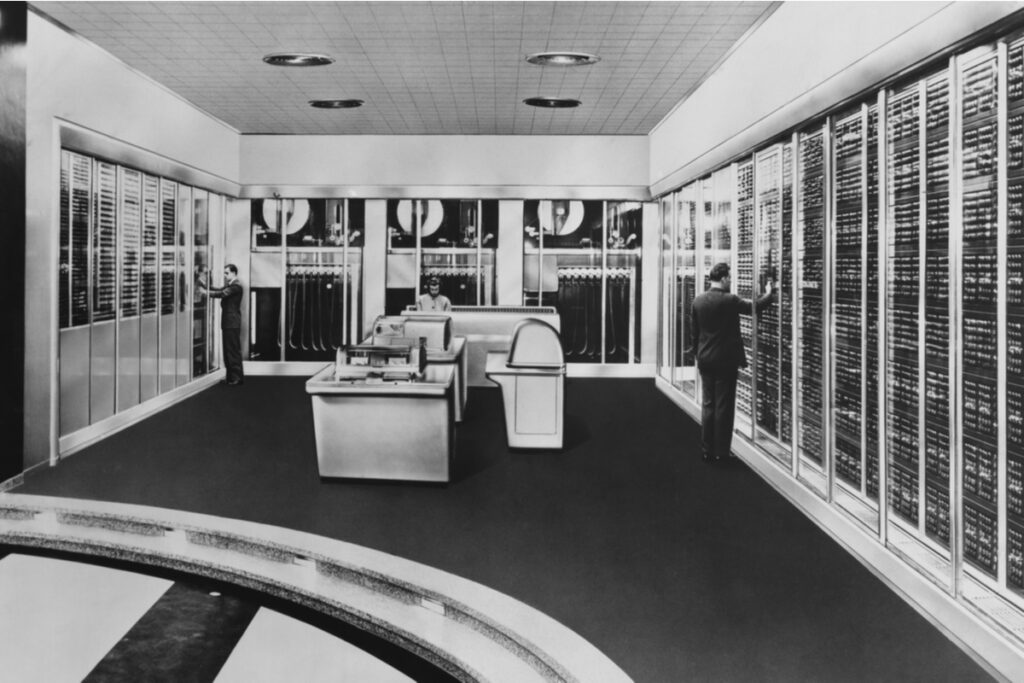
Does the mainframe sound to you like something you’d see in a catalog from the 1950s?
The reality is that although mainframes were a popular design for early computers, we still use mainframe computers in cutting-edge modern setups. It’s just that the design and build of mainframes have changed, along with everything else in IT. Things have gotten smaller, sure, but there is still abundant value in co-locating resources in a way that makes mainframes relevant and useful.
The Early Mainframe
The definition of a mainframe computer is that all of the combined resources are contained within one central machine.
With that in mind, the definition fits the old Von Neumann machines like ENIAC from the 1950s. These computers were as big as washing machines or dishwashers, and are now part of the classic IT museum set.
However, modern mainframes also fit the description, because they consolidate a large number of resources into one large machine shell, often to provide a number of teraflops or petaflops, etc. The modern mainframes are most often seen in large data centers, where they are networked together to provide enormous amounts of computing power and processing through the cloud.
Here’s how the system often works – due to advances in cloud and network virtualization, instead of setting up a number of smaller servers or computers, planners can set up one large mainframe and logically partition services inside. VMs and other logical or LPAR components will play their roles and be administrated as if they were separate little boxes in a rack server or even distributed throughout more than one business location. In reality, though, they are all packed inside the mainframe, presenting an appropriate attack surface and providing for central environmental management.
In other words, the mainframe continues to play a key role in modern computing. Think of it as the “all in one” box, where disparate elements get connected together and packaged in a way that allows larger business operations and multi tenant cloud systems to thrive.
Specific kinds of support for mainframes are critical to keeping systems in good condition and running a well-oiled ship.We can help with resource allocation, analysis, and the kinds of close monitoring that support mainframe operations and other aspects of a competitive IT strategy. Take a look at our managed IT services, from server support to advanced troubleshooting for hardware distribution, and know that we have the resources to back you up in whatever you need for business!


Leave a Reply